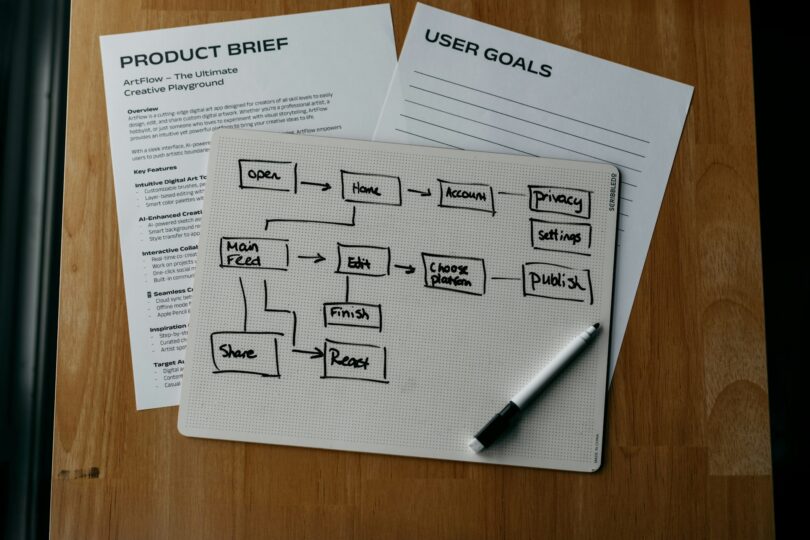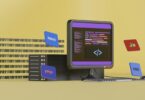Agile vs. Waterfall: Choosing the Right Development Methodology
The software development landscape has evolved significantly over the last few decades, giving rise to multiple project management methodologies aimed at delivering successful products. Among the most prominent are the Agile and Waterfall methodologies. Each approach offers distinct advantages and challenges, and choosing the right one can greatly influence a project’s success.
In this article, we’ll explore the core principles, benefits, drawbacks, and ideal use cases of both Agile and Waterfall methodologies. We’ll also provide a side-by-side comparison to help you make an informed decision on which method best suits your project’s needs.
What is the Waterfall Methodology?
Waterfall is one of the earliest methodologies used in software development. It follows a linear and sequential approach, where progress flows in one direction—like a waterfall—through the following phases:
-
Requirements Gathering
-
System Design
-
Implementation (or Coding)
-
Testing
-
Deployment
-
Maintenance
Each phase must be completed before the next begins. There is typically little to no overlap between stages.
Key Characteristics of Waterfall
-
Highly structured and sequential
-
Extensive documentation
-
Clearly defined scope and timelines
-
Emphasis on upfront planning
Pros of Waterfall
-
Clear structure and milestones: The linear path makes it easier to understand what comes next.
-
Easier budgeting: Since requirements are defined early, costs can be estimated with a high degree of accuracy.
-
Ideal for fixed-scope projects: Works well for projects with stable, well-understood requirements.
-
Ease of management: With clearly defined deliverables and phases, Waterfall is easier to manage and monitor.
Cons of Waterfall
-
Limited flexibility: Changes are hard to implement once the project is in motion.
-
Late testing phase: Issues may be discovered too late in the development cycle.
-
Client involvement is minimal: Feedback is usually not incorporated until the very end.
-
High risk of failure in dynamic environments: Not ideal for projects where requirements evolve.
What is the Agile Methodology?
Agile is an iterative and incremental approach to software development. It emphasizes flexibility, collaboration, customer feedback, and rapid delivery. Agile projects are broken into smaller cycles called “sprints,” typically lasting 1 to 4 weeks. At the end of each sprint, a working product increment is delivered.
Agile isn’t a single methodology but a family of related frameworks like Scrum, Kanban, Extreme Programming (XP), and Lean.
Key Characteristics of Agile
-
Iterative development
-
Continuous feedback
-
Adaptive planning
-
Cross-functional teams
Pros of Agile
-
Flexibility and adaptability: Easily accommodates changes in requirements.
-
Customer involvement: Frequent feedback helps keep the project aligned with user needs.
-
Faster delivery of value: Working software is delivered early and often.
-
Improved quality: Continuous testing and integration promote higher code quality.
Cons of Agile
-
Less predictability: Budgets and timelines can be difficult to estimate.
-
Requires experienced team members: Agile depends heavily on team collaboration and communication.
-
Scope creep: Without strong controls, the project can expand beyond initial expectations.
-
More client involvement needed: Not every client has the time or resources to engage continuously.
Side-by-Side Comparison: Agile vs. Waterfall
| Aspect | Waterfall | Agile |
|---|---|---|
| Development Style | Sequential | Iterative and incremental |
| Flexibility | Low | High |
| Customer Involvement | Minimal | High |
| Documentation | Extensive | Lean but sufficient |
| Risk Management | Late identification | Continuous assessment |
| Cost and Time Estimate | Easier to predict | Challenging, but adaptable |
| Team Dynamics | Siloed functions | Cross-functional collaboration |
| Project Size | Better for large, defined scope | Better for dynamic, evolving scope |
When to Choose Waterfall
Waterfall is ideal in the following situations:
-
Clear and fixed requirements: If all aspects of the project are well-understood from the beginning.
-
Regulatory or compliance projects: Where extensive documentation is required.
-
Short-term projects with low complexity: Waterfall works well when there’s little uncertainty.
-
Budget-constrained initiatives: When a fixed budget and timeline must be adhered to.
-
Hardware-dependent projects: These often require step-by-step development and testing.
When to Choose Agile
Agile is suitable for:
-
Projects with evolving requirements: Especially when stakeholders refine ideas as development progresses.
-
Startups and product development: Where speed and adaptability are key.
-
Customer-centric applications: When frequent feedback is essential to success.
-
Teams with high collaboration: Agile thrives in environments that support teamwork and communication.
-
Complex or innovative projects: Where exploration and flexibility are necessary.
Hybrid Approaches: The Best of Both Worlds?
Recognizing that no one-size-fits-all methodology exists, many organizations are adopting hybrid models that combine elements of both Agile and Waterfall.
Examples of Hybrid Approaches
-
Water-Scrum-Fall: Requirements and release phases are handled using Waterfall, while development is done in Agile sprints.
-
Agile-Waterfall Mix: Teams plan the overall project using Waterfall but develop and test individual components using Agile.
These hybrid models are especially useful for large enterprises or government projects that require the structure of Waterfall but benefit from Agile’s responsiveness.
Case Studies: Real-World Applications
Waterfall in Aerospace
NASA and other aerospace organizations often use Waterfall due to the critical importance of documentation and regulatory compliance. These projects typically have well-defined requirements and long development cycles, making Waterfall a natural fit.
Agile in Tech Startups
Companies like Spotify, Twitter, and Airbnb use Agile methodologies to iterate rapidly, gather customer feedback, and pivot as needed. These environments prioritize innovation and speed, where Agile’s flexibility is invaluable.
Tools That Support Agile and Waterfall
Waterfall Tools
-
Microsoft Project
-
GanttPRO
-
Lucidchart (for process flows)
-
Smartsheet
Agile Tools
-
Jira
-
Trello
-
Asana
-
Monday.com
-
VersionOne
Many tools now offer features that can support both methodologies, allowing teams to tailor workflows as needed.
Key Considerations for Decision-Makers
Before choosing a methodology, ask yourself:
-
Are the requirements well-known or still evolving?
-
How involved will stakeholders be during development?
-
What are the constraints around time, budget, and scope?
-
How large and experienced is the team?
-
Is regulatory compliance a significant factor?
Understanding your organization’s goals, project specifics, and team dynamics is essential in choosing the right approach.
Conclusion
Agile and Waterfall are both powerful methodologies, but their effectiveness depends on the context in which they are used. Waterfall is best suited for projects with clearly defined requirements, where predictability and thorough documentation are paramount. Agile shines in dynamic, fast-paced environments where continuous improvement and customer feedback are valued.
By assessing your project’s needs, organizational culture, and risk tolerance, you can choose a methodology—or a hybrid—that ensures success from concept to completion. Ultimately, the goal is not to follow a methodology for its own sake but to deliver high-quality products that meet user needs efficiently and effectively.







